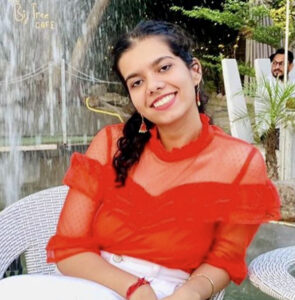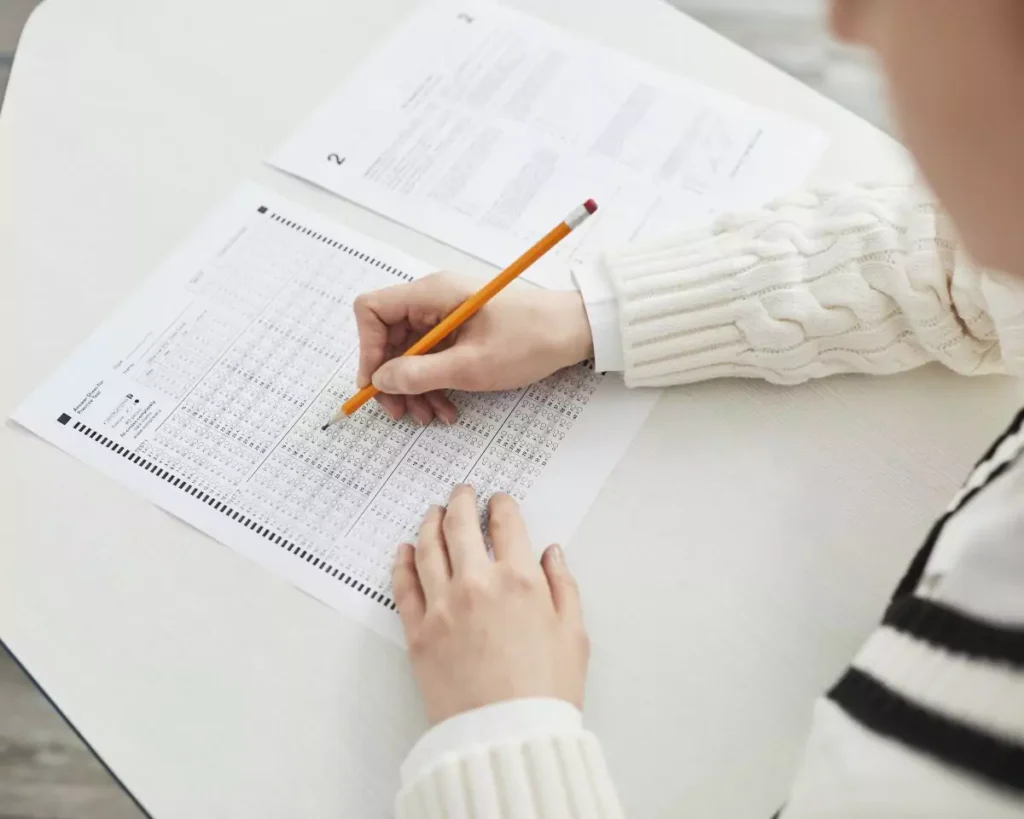
Jamia Millia Islamia BTech: Eligibility, Courses, Exam Pattern and Syllabus

Kritika Yadav

Bachelor of Technology (B.Tech.) program offered at Faculty of Engineering & Technology – Jamia Millia Islimia is a 4 years (8 semesters) degree program. At the end of the program B. Tech. degree is awarded, which is recognized by all the government and private agencies both in India and abroad. Candidates after completion of degree can choose for higher studies or can choose to work with different government / private organizations.
B. Tech. Degree programs offered by Jamia Millia Islamia at Faculty of Engineering & Technology are :-
- Civil Engineering
- Mechanical Engineering
- Electrical Engineering
- Electronics & Communication Engineering
- Computer Engineering
Jamia Millia Islamia BTech Highlights
| Particulars | Jamia Millia Islamia BTech Highlights |
| Duration | 4 years |
| Fee | INR 64,600 (for all specialisations) |
| Number of specialisations | 5 |
| Seats | 350 |
| Common eligibility | Class 12 or SSS certificate with 55% aggregate in PCM |
| Accepted entrance exam | JEE Main |
| Average package | Overall (2021): INR 7 LPA NIRF (4-year UG) 2020: |
Jamia Millia Islamia BTech Eligibility Criteria
A candidate should not be less than 17 years old and more than 23 years old on 1st October of the year of entrance examination.
JMI B.Tech Educational Qualification
A candidate must have passed Sr. Sec. School Certificate i.e. 10 + 2 or intermediate or an equivalent examination with Physics, Chemistry And Mathematics. A candidate must have to secure 45% marks in the qualifying examination. The candidates who are appearing in the qualifying examination can also choose to appear in Jamia Millia Islamia – Entrance Examination, provided such candidate will furnish the proofs of fulfilling the eligibility criteria during the counseling for admission into a course.
Jamia Millia Islamia BTech: No. of Seats
No. of seats in different B. Tech. degree programs offered by Jamia Millia Islamia at Faculty of Engineering & Technology.
- Civil Engineering – 60 Seats
- Mechanical Engineering – 60 Seats
- Electrical Engineering – 60 Seats
- Electronics & Communication Engineering – 60 Seats
- Computer Engineering – 60 Seats
Jamia Millia Islamia BTech Admission Dates 2022
| Jamia Millia Islamia BTech Important Dates | |
| Application process | 14 Apr ’22 – 12 May ’22 |
| Editing of application form | 13 May ’22 – 15 May ’22 |
| JEE Main application | Session 1: 1 Mar ’22 – 5 Apr ’22 Session 2: First week of May ’22 (Tentative) |
| JEE Main exam | Session 1: 20 Jun ’22 – 29 Jun ’22 Session 2: 21 Jul ’22 – 30 Jul ’22 |
| Last date for submitting the entrance exam score | 30 Sep ‘22 |
Jamia Millia Islamia BTech Test Pattern
Engineering Entrance Examination conducted by Jamia Millia Islamia is Objective Type examination conducted in a single day. Test pattern for B. Tech. Degree program offered at Jamia Millia Islamia New Delhi. given below
Subject Weightage
Physics 55
Chemistry 55
Mathematics 60
The duration of test is 3 hours. All the candidates who find place in the merit of written examination are called for Interview. The weightage for Interview is 30. The final merit list for admission is prepared on the basis of written test and interview.
Jamia Millia Islamia BTech Syllabus
Topics from which questions are asked in Jamia Millia Islamia Engineering Entrance Exam are given below:
Physics
Units and dimensions, SI units, displacement, velocity, kinematics in one and two dimensions with constant acceleration, projectiles, concepts of relative motion, circular motion. Newton’s Laws of motion, concepts of inertial frame, momentum and energy, universal law of gravitation, variation of the acceleration due to gravity with altitude and latitude. Kepler’s Law of motion of planets and satellites assuming circular orbits, simple harmonic motion. Centre of mass of a system of particles, elastic and inelastic collision in one dimension, rigid bodies, moments of inertia of simple shapes like ring, disc, cylinder and sphere, angular momentum, torque, conservation of angular momentum. Hook’s law, Young’s Modulus shear and bulk moduli, principle of buoyancy, pressure in a fluid wave motion, concepts of amplitude, frequency and phase, longitudinal and transverse waves, progressive and stationary waves, vibration of string and air columns, resonance, Doppler’s effect, Thermal expansion of solids, liquids, and gas, gas laws, absolute temperature, specific heat, Cp, Cv and isothermal and adiabatic processes, calorimetry, latent heat, equivalence of heat and work, conduction, convection and radiation, Elements of Kinetic Theory of gases, pressure of an ideal gas equipartition of energy, coulomb’s law, electric field, lines of force, electric potential. capacitors in series and parallel, energy stored in a capacitor, electric current, Ohm’s law, Series and parallel arrangement of resistances and cells, Krichoff’s Law, Wheatstone bridge and application, heating effect of current, current carrying wire in a magnetic field, moving coil, galvanometer and ammeter, Amphere’s law, Faraday’s Law, Lorentz Force, effect of magnetic field on current carrying conductors, Maxwell’s equations, curved mirrors and thin lenses, magnification, microscope telescope, wave nature of light, interference phenomenon, Young’s double silt experiment, fringe width, polarisation of light, cathode rays radioactivity law of decay, half life, photo-electric effect, Byohr’s theory of hydrogen like atoms, X-rays production and properties, diode rectification and triode amplification, Atomic nucleus, binding energy, nuclear energy by fission and fusion, elementary properties of semi conductors and devices based on them, Michelson Morley experiment, postulates of special theory of relativity
Chemistry
General Chemistry/ Physical Chemistry: Atomic mass, extraction of metals, gas laws, ideal gas equation, Kinetic molecular theory of gases, constituents of the atom, nuclear model of atom, Bohr’s atomic model (Mathematical details excluded), Quantum mechanical model of atom. Aufbau principle, Hund’s Rule. Paul’s exclusion principle, de Broglie equation, Uncertainty principle, shapes of obitals, Modern periodic table, periodic trends in properties, ionization energy, electron affinity, atomic radii and electronegativity, Chemical bonds, quantum theory of covalent bonds, hydrogen bond, hybridization involving s.p. & d orbital, shapes of molecules, VSEPR Concept, molecular orbital theory, solid state, X-ray studies of crystals, packing in crystals, crystal lattices, Internal energy, enthalpy, Hess’s Law, entropy, free energy, heat of reactions, concept of chemical equilibrium, Law of Equilibrium, Le Chatelier’s Principle and its applications, ionisation of electrolytes, acid base equilibrium, solubility product, ionization of water, pH, redox reactions, Galvanic cell and its EMF, electrode potential, effects of temperature and concentration, electrolysis, Oxidation number, Solutions, lowering of vapour pressure, Raoult’s Law, chemical kinetics, rates of reaction, its dependence on concentration, order of a reaction, factors affecting rate of a reaction, rate constant, half life period of first order reaction, absorption, colloidal state, preparation and properties of colloidal solutions, gold no, radioactivity, half life, Carbon dating, chemical thermodynamics.
Inorganic Chemistry: Preparation and Properties of the following : Hydrogen, Oxygen, Halogens, Noble gases, Water, Hydrogen peroxide, Nitrogen, Boron, Silicon, Phosphorous, sulphur, sodium, potassium, magnesium, calcium, aluminium, iron, copper, silver, gold, zinc, mercury, tin, lead, transition elements, inner transition elements, cement, glass, plastics, soaps, detergents, coordinate compound.
Organic Chemistry: Organic radicals, ions, inductive, electromeric and resonance effects, isomerism, Homologous series. General preparation and functional group properties of the following with emphasis on points noted against each of them.
(a) Alkanes (free radical substitution) alkenes (electrophilic addition, Markownikoffs addition, peroxide effect) and alkynes
(b) Alcohol, distinctions, holoform reaction
(c) Alkyl halides (Nucleophlic substitution)
(d) Carbonyl compounds (Nucleophilic, Addition, polymerization and condensation)
(e) Ethers and carboxylic acids
(f) Amines (classification, distinction, basic nature)
(g) Benzene (resonance), Toluene, Phenol, glycerol, Oils and Fats; Proteins, nucleic acids. Carbohydrates and lipids.
Mathematics
Set Theory and Higher Algebra: Algebra of sets, relation, One, Many one, Onto and Into Mappings, Inverse mapping, Composite mapping, Bounded and unbounded sets Neighbourhood of a point, domain, Codomain, Range. Square roots of polynomial quadratic surds, unity, A.P., H.P., G.P. and other related miscellaneous series, A.G.P., Method of differences, Sum of the squares and cubes of sum of the squares and cubes of first n nature numbers, Simple geometrical problems of permutations and combinations, General terms in the expansions of Logarithmic, Exponential series, binomial and multinomial theorems, remainder theorem, Factor theorem, rationalising factor of binomial surd of different orders, Conversion of a fraction and a quadratic surds into a continued fraction, Inequalities. Periodic function, hyperbolic function, Inverse hyperbolic functions, Greatest integer functions, Absolute function, Sisgnum function, Even and Odd functions, Transcendental functions, Rational and Irrational algebraic functions etc.
Vector Algebra: Linear combination of vectors, linear dependence and independence of vectors, Geometrical applications of dot (scalar) and cross (vector) product of two, three and four vectors.
Plane and Solid Geometry: Classification of curves represented by general polynomial equations (homogeneous and non- homogeneous) of second degree in x and y, Homogeneous equations of nth degree, Detailed study of families of Straight lines and Circles, Parabola, Ellipse and Hyperbola, condition of tangency of a line to a curve of any positive integral degree in x and, simple problems on plane, straight line in space and sphere.
Trigonometry: Trigonometrical conditional identities and equations, Relations between sides, angles and radii of incircle, circum circle and excribed circle associated with triangle, Inverse circular functions, Polar form of complex number, Euler’s formula, Values of (a + ib )p/q , Applications of De-Moivre’s theorem.
Determinants and matrices: Multiplications of determinants and matrices, adjoint and inverse of matrices, rank ‘of matrix, Cramer’s rule, Applications of determinants and matrices, Geometrical transformations (i.e. reflection, rotation, translation, enlargement), their composition and representation by matrices. Limit, Continuity, Monotonocity, Differentiability, Differentiation of composite function, Implicit relation, Parametric forms, logarithmic differentiation, differentiation by transformations, increasing and decreasing functions, Tangent, Normal, Maxima and Minima of a function of one variable, velocity, Acceleration, rolle’s theorem, Lagrange’s mean value theorem, standard results on successive (ordinary and partial) differentiation. L‘Hospital’s rule, Seven indeterminate forms, Euler’s theorem on homogenous function for partial differentiation, Simple problems on Leibnitz’s theorem. Equations of tangent plane and normal line at any point of 3 D figures.
Integral Calculus: Integration by well known standard results, by substitutions, by parts, by partial fractions, some well known definite integrals, properties of definite integrals, Reduction formulae, Applications of definite integral in finding the area of bounded region in z- y plane, Volume and lateral (curved) surface area of some well known 3-D solids obtained by revolution, Mean value, Mean square value, root mean square value of a function for a given interval, Calculation of a interval in which the value of a given definite integral exists.
Differential Equations: Formation of ordinary and partial differential equations, General and particular solution of O.D.E. of I order and I degree (i.e. variable separable for, homogeneous form, linear form, exact form and their reducible form obtained by some transformations and integrating factors), O.D.E. of I order but not of I degree, General solution of dny/dxn = G(x), d2y/dx2 = H(y). Karl Pearson’s simple correlation coefficient for a tabulated function between two variable Coefficients of covariance and variation, Lines of Regression, regression coefficients Properties of binomial, normal and poission distributions. Measures of skewness and Kurtosis.
Jamia Millia Islamia BTech Placements
| Year | Average Salary* – 4-year UG Course | Number of students placed – 4-year UG Course |
| 2018 | INR 6 lakh | 308 |
| 2019 | INR 5.8 lakh | 321 |
| 2020 | INR 6 lakh | 333 |




